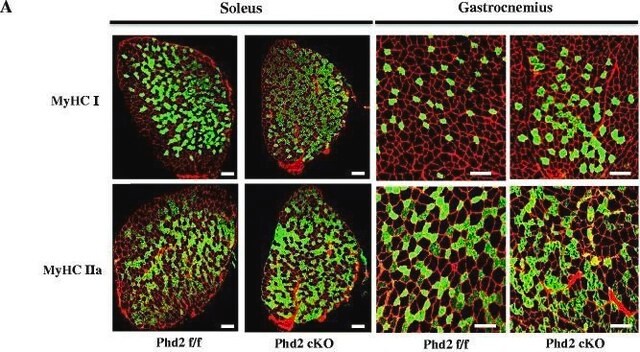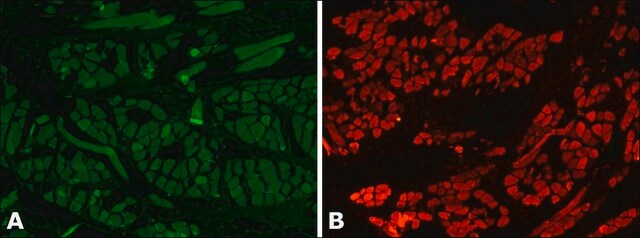A4335
Monoclonal Anti-Myosin (Skeletal, Fast)−Alkaline Phosphatase antibody produced in mouse
clone MY-32, purified from hybridoma cell culture
Sinónimos:
Monoclonal Anti-Myosin (Skeletal, Fast) antibody produced in mouse
About This Item
Productos recomendados
biological source
mouse
Quality Level
conjugate
alkaline phosphatase conjugate
antibody form
purified immunoglobulin
antibody product type
primary antibodies
clone
MY-32, monoclonal
form
buffered aqueous glycerol solution
species reactivity
rat, chicken, rabbit, mouse, human, bovine, guinea pig, feline
technique(s)
direct immunofluorescence: 1:150 using formalin-fixed, paraffin-embedded human or animal skeletal muscle sections
isotype
IgG1
UniProt accession no.
shipped in
wet ice
storage temp.
2-8°C
target post-translational modification
unmodified
Gene Information
human ... MYH1(4619) , MYH2(4620)
mouse ... Myh1(17879) , Myh2(17882)
rat ... Myh1(287408) , Myh2(691644)
¿Está buscando productos similares? Visita Guía de comparación de productos
General description
Specificity
Immunogen
Application
Biochem/physiol Actions
Physical form
Disclaimer
¿No encuentra el producto adecuado?
Pruebe nuestro Herramienta de selección de productos.
Related product
Storage Class
10 - Combustible liquids
wgk_germany
WGK 2
Certificados de análisis (COA)
Busque Certificados de análisis (COA) introduciendo el número de lote del producto. Los números de lote se encuentran en la etiqueta del producto después de las palabras «Lot» o «Batch»
¿Ya tiene este producto?
Encuentre la documentación para los productos que ha comprado recientemente en la Biblioteca de documentos.
Nuestro equipo de científicos tiene experiencia en todas las áreas de investigación: Ciencias de la vida, Ciencia de los materiales, Síntesis química, Cromatografía, Analítica y muchas otras.
Póngase en contacto con el Servicio técnico




